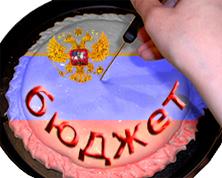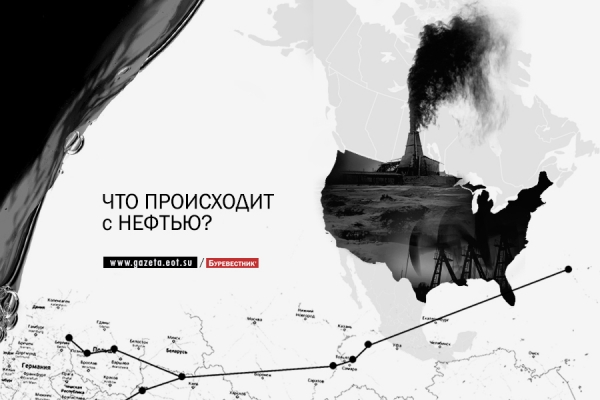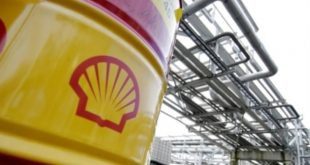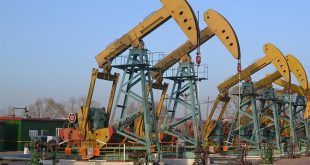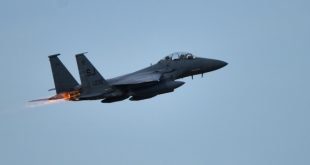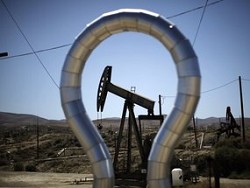
Russia missed the opportunity to restructure the economy, when oil was expensive. But there is a little consolation: on the same rake came not only Russia.
Cash fountain
Direct calculations, as brought expensive oil-exporting countries, no. Indirect rate — the amount established in almost all these States, sovereign funds, provide a safety cushion in case of crises such as the current one. According to the Sovereign Wealth Fund Institute, if before 2001 the assets of such funds in Qatar, Norway, Russia and Saudi Arabia accounted for less than $ 1 trillion, in February 2015, they reached $ 7 trillion.
In Russia, the oil revenues are allowed to increase pensions and salaries. In 2000 the old-age pension was less than 1 thousand was growing up. rubles, in 2015 it exceeded 12 thousand rbl. In 2000 the average per capita income was just over 2 thousand rubles, in 2015 — more than 30 thousand
In the Arab monarchies of the Persian Gulf petrodollars were even more. In 2001-2014, the average daily level of oil production in Russia amounted to 52% of the total production of five States in the region — Saudi Arabia, Qatar, Kuwait, UAE and Oman. Besides the cost of oil Arabian Light above the main benchmark of the Russian Urals, while exports was more than 80% of raw materials against just about half of Russia. While the region’s population is almost three times less than Russia — its population does not reach 55 million people, 21.8 million of them, according to UN data for 2013, are migrant workers, are completely excluded from the social security system.
Gulf monarchies created in the population a high standard of consumption. The Saudis, for example, in the period of high oil prices managed to take nine programs to support citizens with low incomes, including insurance assistance, additional support, furniture, buy products at discounted prices, etc. the Condition of participation in the program involves monthly income below 1725 riyals ($ 460). During the “Arab spring” (2011), which threatened to spread to the Gulf monarchies, expenses on social support of citizens in Saudi Arabia amounted to $ 36 billion, and the Kuwaiti authorities agreed to provide every citizen a lump sum almost in $ 4 thousand and guaranteed free food for more than a year.
The civil service as a subsidy
But the main source of welfare employment in the public sector. Up to 70% of the natives of the region one way or another work for the state, while receiving a larger salary than they could in a private company.
In the private sector is dominated by low-skilled foreign workers. According to the 2010 census, the proportion of migrant workers (from Pakistan, Bangladesh, India, Egypt and Yemen) in the population of Saudi Arabia amounted to 31%. The UAE, according to the UN, is a world leader in this index is 83.7%. According to the calculations of the IMF, from 2000 to 2010 in the private sector oil producing economies of the Persian Gulf (except UAE) was created 5.4 million jobs, 88% of them were occupied by foreign workers.
The natives of the States of the region do not want to work in private companies, which mainly operate in sectors that do not generate export goods (e.g. services and construction). In 2005, the Islamic theologian Yusuf Qaradawi, residing in Qatar, said during a sermon: “We can afford the most luxurious things and machines, we own them, but do not produce them. We import everything from nails to rockets”. His statement went on YouTube and did Qaradawi.
Sochi Arabic
In the “fat years” the Gulf countries were keen on investing in the future — in modern infrastructure and innovative city. At the end of 2014, according to the calculations of CG/LA Infrastructure, the region implemented 41 mega-project totaling $ 247 billion.
The leader of Saudi Arabia: Riyadh has planned various projects at $ 93 billion the Most ambitious is the construction of so-called economic cities: five cities, special economic zones on the coast of the red sea, with a total investment of $ 69 billion is The largest Economic city of king Abdullah, it is planned to invest $ 27 billion In the city, whose construction should be completed by 2035, there can be up to 1 million jobs. It will be a modern seaport, industrial district and “financial island” to house offices of major banks (however, the implementation of the latter part of the draft was abolished back in the “fat years”). The hallmark of the city should be the study and development of renewable energy sources. Another economic city — Jizan — must be a centre of heavy and agricultural industries. It will include a port, aluminium plant and steel mill. In the draft plan to invest $ 27 billion, its implementation will help create an additional 500 thousand jobs.
For each of the five cities we will operate our own production profile. Separate “city of knowledge” will be erected in Medina, the investments will amount to $ 7 billion, there is planned to attract IT companies.
Among other major projects are the construction of transport systems in major cities of the Kingdom. The metro in Jeddah, which is scheduled to finish by 2020, we want to spend $ 10 billion to build three underground lines, and the design of stations that the Bureau well-known British architect Norman foster. Another $ 22.5 billion planned for the construction of a metro in the Saudi capital Riyadh, and the development of the transport system of Makkah — $ 39 billion
In Bahrain the authorities have invested billions of dollars in commercial real estate: in the project “the Bahrain Financial harbour” has invested $ 1.5 billion In March 2014 it announced a plan to invest in a series of major development projects (total investment should reach $ 24.5 billion).
Qatari investments are focused on transport infrastructure — the construction of the metro in Doha ($ 36 billion) and the airport in Hamada ($ 15.5 billion). The main investment project of Qatar should be the world Cup, which will be held in the country in 2022. In the championship, as announced in February of 2016, the head of the organising Committee Hassan al-Thawadi, Qatar will spend $ 30 billion the country is now forced to save: instead of the originally stated 12 stadiums will be built only eight. Qatar already lays some of the major projects for the period “after 2022”. In particular, it has been frozen the project of construction of transport interchanges in the vicinity of the village of shark, estimated at $ 12 billion.
The rate has not played
“To reduce dependence on oil in the period the fall in oil prices is how to act when you sent in the head with a gun. If you have to make decisions under pressure, most likely, these decisions will be wrong, “—said in March 2015, Deputy oil Minister of Oman Salim al-Aufi. Then the cost of a barrel of Brent crude reached $ 60, for six months lost nearly 50%; now the price is about $ 30. According to the IMF, the region’s average share of energy in total exports by the end of 2014 was more than 80%.
The fall in oil prices led to a sharp deterioration of basic economic indicators. So, the budget for 2016 Saudi Arabia has laid a record of the Kingdom of the deficit is $ 87 billion From Russia, for comparison, is $ 37 billion, and Finance Minister Anton Siluanov warned that if the oil price around $ 30 per barrel, this amount could double. The budget of Kuwait for the fiscal year from April 2015 to April 2016 was approved with a deficit of $ 27 billion budget Deficit Bahrain — about $ 3.9 billion.
Sovereign wealth funds can help countries oil for a while to feel rather calm and not resort to “shock” measures to reduce public spending. This opinion was expressed in a conversation with RBC head of the IMF mission in Saudi Arabia Timothy Cullen. In the largest pod of the countries of the region sovereign investment Fund ADIA (UAE) — $ 773 billion In the Russian Reserve Fund and national welfare Fund — $ 124 billion
However, infrastructure and development mega-projects in conditions of low oil prices was under threat. In September 2015, the Minister of Finance of Saudi Arabia Ibrahim al-Assaf said that the authorities will reduce the “unnecessary expenses”. Budgetary expenditure of the Kingdom for the development of transport networks and infrastructure has declined in 2016, 63% (by 2015), to $ 6.4 billion As reported by Bloomberg, Riyadh for six months and not pay the contractors of subway construction. In the fall of rating Agency Standard & Poor’s noted that “the longer oil prices will remain at low level, the higher the probability that many infrastructure projects will be curtailed or postponed”.
In General, the willingness of Gulf countries to low oil prices can be assessed as unsatisfactory. “The Gulf was ten years of plenty to carry out structural reforms gradually, and from a position of strength. Now oil prices fell, the demand for change stronger, but the required conversion is too difficult and painful to carry out them quickly, “said the Financial Times chief specialist of HSBC Bank Middle East Simon Williams in the spring of 2015.
Callen of the IMF, in conversation with RBC said that some of the key conditions for the diversification in recent years were completed: developed infrastructure, growing investment in education, improved business climate. Now Arab monarchies it is necessary to give private companies incentives to produce goods that can be realized in foreign markets. According to Cullen, the countries of the region need to refocus their spending and increase the role of competition among private companies.
A special case of Dubai
Bid to reduce dependence on hydrocarbons only worked in the UAE, namely in Dubai. “Dubai has managed to create a modern infrastructure and make it attractive for business, commercial and financial center of the region“, — stated in the IMF report. To create a modern infrastructure for the Emirate began in the late 1970s: then was launched the largest aluminium company DUBAL, then was built one of the largest ports in the world Jebel Ali. In 1980-e years was created one of the world’s largest airline Emirates Airlines. And in 2004 the Dubai international financial center, free trade zone, which employs more than 800 companies.
“Dubai used first-mover advantage in the airline business, financial services, Maritime freight transport, and even light industry. Other countries in the region will now have to look for such a sector, where Dubai has not yet been revealed“, — told the researcher of rice University Jim crane Bloomberg.
Oil economy
Bahrain
Area, sq km — 765
Population, thousand people — 1404,9
GDP PPP, $ bn — 64,9
Exports, $ bn — 18
Oil reserves, billion barrels. — 0,12
The share of oil and gas revenues in the budget, % — 88
The oil price needed to break even budget for 2016, $/bbl. — 109,5
The size of the largest sovereign wealth Fund, $ bn — 11,1
Qatar
Area, sq km — 11 586
Population, thousand people — 2423,2
GDP at purchasing power parity in 2015, $ billion 324,2
Exports, $ billion 131,6
Oil reserves at the end of 2014, billion barrels. — 25,7
The share of oil and gas revenues in the budget, % to 50
The oil price needed to break even budget for 2016, $/bbl. — 61,1
The size of the largest sovereign wealth Fund, $ bn — 256
Kuwait
Area, sq km — 17 818
Population, thousand people — 4183,7
GDP at purchasing power parity in 2015, $ billion 288,8
Exports, $ bn — 101,1
Oil reserves at the end of 2014, billion barrels. — 101,5
The share of oil and gas revenues in the budget, % — 82
The oil price needed to break even budget for 2016, $/bbl. — 48,1
The size of the largest sovereign wealth Fund, $ bn — 592
United Arab Emirates
Area, sq km — 83 600
Population, thousand people — 9856
GDP at purchasing power parity in 2015, $ billion 641,9
Exports, $ bn — 222
Oil reserves at the end of 2014, billion barrels. — 97,8
The share of oil and gas revenues in the budget, % — 69
The oil price needed to break even budget for 2016, $/bbl. — 76,4
The size of the largest sovereign wealth Fund, $ bn — 773
Oman
Area, sq km — 309 500
Population, thousand people — 4370,8
GDP at purchasing power parity in 2015, $ bn — 171,7
Exports, $ billion and 50.7
Oil reserves at the end of 2014, billion barrels. — 5,2
The share of oil and gas revenues in the budget, % — 88
The oil price needed to break even budget for 2016, $/bbl. — 97
The size of the largest sovereign wealth Fund, $ bn — 34
Saudi Arabia
Area, sq km — 2149 690
Population, thousand pers — 32 248,2
GDP at purchasing power parity in 2015, $ billion 1681,2
Exports, $ billion 349,7
Oil reserves at the end of 2014, billion barrels. — 267
The share of oil and gas revenues in the budget, % — 80
The oil price needed to break even budget for 2016, $/bbl. — 101,8
The size of the largest sovereign wealth Fund, $ bn — 623,2
Data on exports and share of oil and gas revenues in the budget for 2014 and others for 2015.
Source: Institute of sovereign wealth funds, IMF, national Bank of Abu Dhabi, the UN, the CIA website, BP

